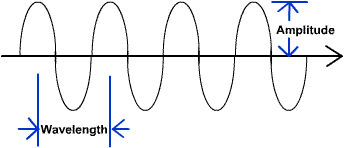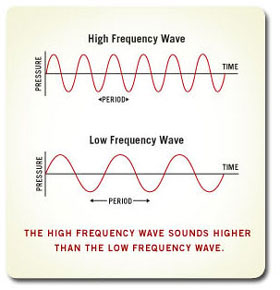Ultrasound physics shows that we hear in a very narrow range
Sound travels in waves. Ultrasound physics has to do with the higher frequencies of sound. Human hearing is from about 20 cycles per second or 20HZ (a low hum) to about 20,000 cycles per second or 20KHZ. Below that is infrasonic and above that is called ultrasound, which is all around us in nature. Sound waves exist in frequency and amplitude.
The frequency is the number of repetitions or cycles per second during a specific time frame. The amplitude is the extent of a vibratory movement (as of a pendulum ) measured from the mean position to an extreme, the maximum departure of the value of an alternating current or wave from the average value. ( Merriam-Websters)

A grasshopper sends out sound waves at 40KHZ. A dog can hear at about 30KHZ and bats send chirps and listens for the echos at 100KHZ. Humans do not hear many of the frequencies being communicated around us. The pitch is determined by the number of waves per second. The shorter the distance between these waves the higher the sound, and the longer the distance or frequency of these waves, the lower the sound.

Illustration thanks to Aperion University
Learn about the
transducer
A-mode ultrasound
or amplitude mode was the first ultrasound machine. It did not have ultrasound images, only a graph. It was hard to interpret and had little detail. Modern ultrasound imaging equipment operates in brightness mode,
or B-mode.
Sound appears to change pitch went you combine movement and sound. Christian Doppler first noticed this when he proposed the theory of the
Doppler Effect
Why not make some money while still in school. A computer, something you like to do, and motivation is all you need.
 |
If you want to learn more about
ultrasound physics go to us-database/ ultrasound.
Genesis ultrasound machine home Page




